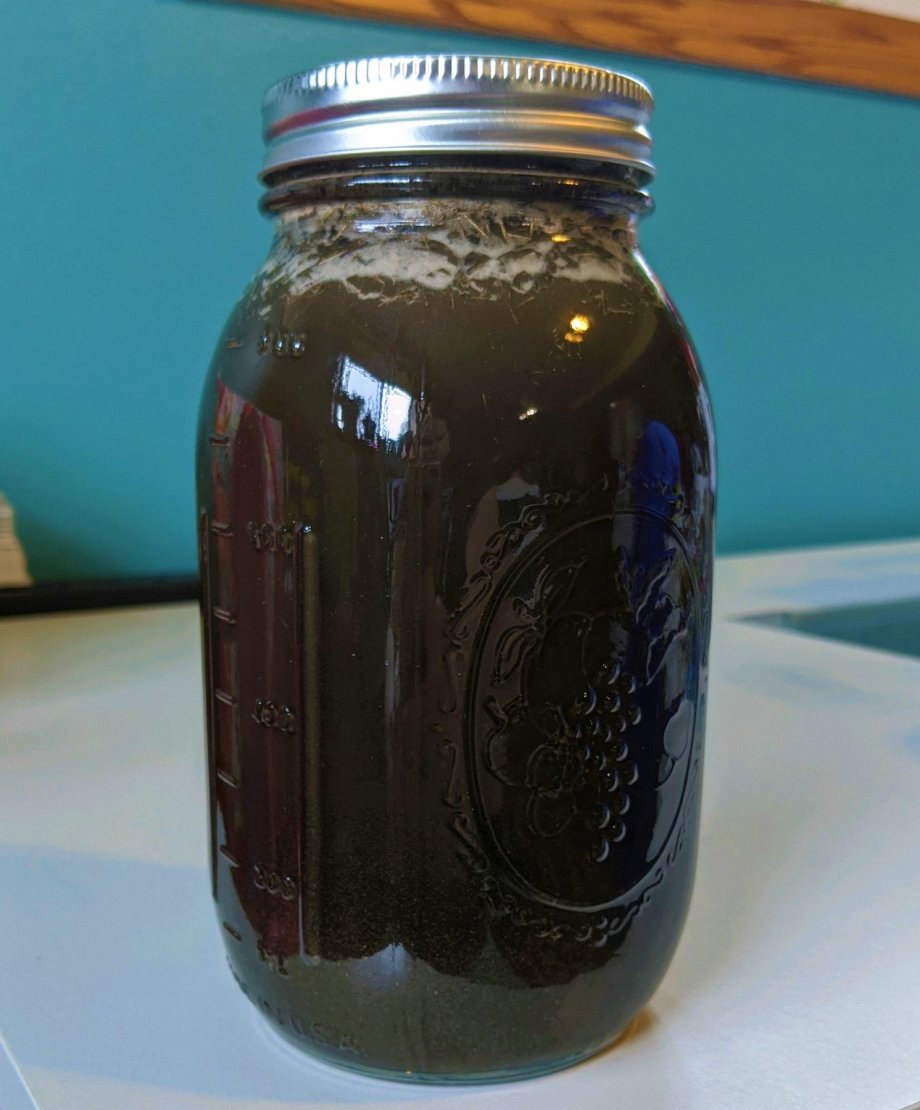Did you know that there are different types of soil? You have probably seen a few different types in your lifetime, but have you ever wondered what makes each type different? Today, we are going to learn about the different soil particles and do an experiment to see how much of each particle you have in your soil. Next week, we’ll continue our experiment and learn how to use the results of this experiment to determine what type of soil you have!
Find a helpful video on how to create your soil particle experiment below:

Materials
- Mason Jar with Lid (pint or quart size will work well)
- Soil (enough to fill about half of your mason jar)
- Water (enough to fill your jar)
Instructions
- Grab your empty mason jar and fill it about half full with loose soil (don’t pack it in). It’s best to get soil all from the same spot in your yard or garden. For example, I’m using a quart size mason jar, and to fill it half full I will need around four inches of soil in the jar. When I go out to get my soil, I’ll dig a hole about the size of my jar that is four inches deep.
- As you put your soil in your jar, make sure you take out any rocks and break up any chunks of soil.
- Fill the rest of your jar with water leaving about an inch at the top so you have some shaking room.
- Close your mason jar tight, because the next step requires shaking!
- Shake your jar vigorously until all of your soil and water is mixed together.
- Find a place to let your jar sit undisturbed for several hours (some soils might need up to 24 hours for it to settle).
- After a while, you will notice layers start to form. These are the different particles that are found in soil!
- Sand: The largest soil particle is sand. Because it is the largest, it will sink to the very bottom of your jar and form your lowest layer. Sand is very good for water drainage, but it doesn’t hold water very well. Sand is the soil particle that can heat up and cool down the fastest as well.
- Silt: The middle size soil particle is silt. Because of this, it will form a layer on top of your bottom/sand layer in your jar. Silt particles have a good balance of holding and draining water, but they can easily cause runoff or soil erosion.
- Clay: The smallest soil particle is clay. Unlike sand and silt that are round, clay is shaped more like plates. Because it is the smallest particle, it will create your top layer in your jar. Clay particles are very good at holding on to water, but they do not drain water very well. Clay is also the soil particle that heats up and cools down the slowest compared to silt and sand.
- After your layers settle, you can determine what percentage of each particle you have. Next week, we’ll take our results and use a soil texture triangle to determine what type of soil we have!
You can find part two of the soil experiment.
Thinking Thursday projects will be posted each Thursday (except for holidays) throughout the museum closure for COVID-19. For a full list of previous projects, visit Thinking Thursday.
Questions? Contact Sarah, the museum's education coordinator.

